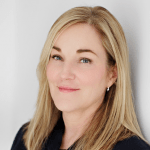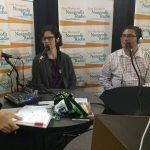
My Guests:
Michelle Frechette & Amanda Gorman: SEO For Your Fundraising Campaign
Our 20NTC panel helps you build your online community and increase engagement with 3 SEO strategies: keywords research; competitor analysis; and, content writing. They’re Michelle Frechette and Amanda Gorman, both from GiveWP.


Yvette Scorse, Christopher Wallace, Taylor Shanklin & Serrie Fung: Rebrand Vs. Refresh
Which is better for you, rebranding or refreshing your brand? Our final 20NTC panel helps you choose, then shares the case study of Byte Back and reveals strategies for getting the buy-in you’ll need for success. They’re Yvette Scorse and Christopher Wallace from Byte Back; Taylor Shanklin at Firefly Partners; and, Serrie Fung, founder of Zest.
Listen to the podcast
Podcast: Play in new window | Download
Subscribe to get the podcast
Apple Podcasts | Spotify | Google Podcasts | Stitcher
Get Nonprofit Radio insider alerts!
I love our sponsors!
![]() Turn Two Communications: PR and content for nonprofits. Your story is our mission.
Turn Two Communications: PR and content for nonprofits. Your story is our mission.
Dot Drives: Raise more money. Change more lives.
We’re the #1 Podcast for Nonprofits, With 13,000+ Weekly Listeners
Board relations. Fundraising. Volunteer management. Prospect research. Legal compliance. Accounting. Finance. Investments. Donor relations. Public relations. Marketing. Technology. Social media.
Every nonprofit struggles with these issues. Big nonprofits hire experts. The other 95% listen to Tony Martignetti Nonprofit Radio. Trusted experts and leading thinkers join me each week to tackle the tough issues. If you have big dreams but a small budget, you have a home at Tony Martignetti Nonprofit Radio.
View Full Transcript
Processed on: 2020-09-29T23:13:02.775Z
S3 bucket containing transcription results: transcript.results
Link to bucket: s3.console.aws.amazon.com/s3/buckets/transcript.results
Path to JSON: 2020…10…509_tony_martignetti_nonprofit_radio_20201005.mp3.267231192.json
Path to text: transcripts/2020/10/509_tony_martignetti_nonprofit_radio_20201005.txt
Hello and welcome to tony-martignetti non profit radio. Big non profit ideas for the other 95%. I’m your aptly named host. Oh, I’m glad you’re with me. I’d be stricken with Ikaria if you irritated me with the idea that you missed today’s show s CEO for your fundraising campaign. Our 20 NTC panel helps you build your online community and increase engagement with three S c o strategies, keywords, research competitors, er analysis and content rating. They’re Michelle Frechette and Amanda Gorman, both from give W P and rebrand versus Refresh, which is better for you re branding or refreshing your brand. Our final 20 NTC panel helps you choose, then shares the case study of bite back and reveals strategies for getting the buy in. You’ll need for success. They’re Evette Scores and Christopher Wallace from Bite Back Taylor Shanklin at Firefly Partners and Sorry Fung, founder of Zest Antonis, take two planned giving accelerator were sponsored by turn to communications, PR and content for nonprofits. Your story is their mission. Turn hyphen two dot ceo and by dot drives raise more money, changed more lives tony-dot-M.A.-slash-Pursuant for a free demo and free month Here is our 20 NTC penultimate panel. Welcome to tony-martignetti non profit radio coverage of 20 NTC. That’s a 2020 non profit technology conference. The conference regrettably had to be canceled, but non profit radio is persevering, of course. Virtually sponsored at 20 NTC by Cougar Mountain Software Denali Fund is there complete accounting solution made for nonprofits tony-dot-M.A.-slash-Pursuant Mountain for a free 60 day trial. With me now are Michelle Frechette and Amanda Gorman. They are both with give. W. P. Shell is head of customer success, and Amanda is customer success manager Shell and Amanda. Welcome. [00:02:32.44] spk_1:
Thanks for having us [00:02:54.94] spk_0:
the pleasure. Thank you. I’m glad we were able to put this all together. The three of us. Thank you, Andi. It’s good to know that each of you is well and safe both in Rochester. Alright, Alright. Um, you’re 20. NTC topic is three s CEO strategies for optimizing your fundraising campaign. Um, Michelle, why don’t you start us off? What? Why did you feel a need? Thio have this workshop? [00:03:01.64] spk_1:
Sure. So you know, we work with nonprofits all day, every day, helping them do fundraising. And Amanda’s area of expertise outside of working with nonprofits, is actually, um, s CEO. And so it was just a natural, um, natural thing for her to want to help, uh, people’s organizations be found on the web, especially so that they can collect donations. [00:03:24.87] spk_0:
Okay. Um, Amanda What? What? Air Nonprofits Not getting so right about the S e O That that we needed this this session. [00:03:35.14] spk_1:
Looks like a man has just lost her connection. [00:03:37.34] spk_0:
Yeah, Amanda did. She’s back. Okay, there she is. Your back Amanda [00:03:41.98] spk_2:
back. I’m sorry. My Internet just decided to kick me out first. [00:03:45.54] spk_0:
Okay. That’s why I had to cancel the session earlier. I lost it for too long, and I had a whole bunch of them back to back. Um, did you hear? Did you hear what I was asking you? Why? What air? Non profit. Really not getting right with S e O. That that we We needed this session. [00:04:00.84] spk_2:
Yes. Yes. And Michelle, did you already give your answer? [00:04:09.44] spk_1:
Yeah, I already talked a little bit, but But, you know, what are they doing wrong? Or they missing the mark on is really for you, [00:04:09.88] spk_2:
right? Right. Absolutely. [00:04:11.83] spk_1:
So there’s a couple of things [00:04:13.18] spk_2:
that we we definitely see and just in my experience, working with a lot of our customers and working with kind of my own intention of starting on non profit and getting excited about that kind of looking at what is out there and what I am saying in the gaps is just like we get really excited about producing a campaign and kind of jump a lot of steps of just getting things started to start raising money. But we don’t necessarily look at the initial steps that should be thought about before the campaign actually hits the page. So what should the content look like? What kind of people are we actually hoping? Engage with us? What are our expectations for those people and how are they going to feel while engaging with our brand or company or organization? I think some more thought needs to be done with all of that before just kind of putting something on the website s o. I try to slow it down a little bit and really get careful about the messaging. Really? Get careful about exactly what we’re trying to communicate on. That all starts with, you know, keyword research and ah, lot of other strategies, [00:05:43.94] spk_0:
which which we’re gonna get into. We have time. Eso You’re the troublemaker, Like people want to get, like, you just Can we just start the campaign, You know, way, you know, why do we have to have mawr ground work We’ve already done. You know, we’ve talked to our key stakeholders, and we’ve got me first dozen donors lined up and and we’ve We’ve got messaging out, you know? So you wanna lay more groundwork? Yes. Yeah, For success. So you have better outcomes. Of course. [00:05:47.41] spk_1:
Sometimes you hear that people say to us, you know, I built a website and I have a fundraising page, but we’re not raising any money. And so it’s not like the field of dreams, right? You don’t just build it and they show up. There’s a lot of work that goes into driving people to your donation page [00:06:34.94] spk_0:
where we should have learned that with first with websites on, then with blog’s and then with podcasts. You know, you don’t just put it out and people come to it. You should have. We should have learned this lesson by now. All right, way. Haven’t Yeah, not. Not satisfactorily. Not all right, um All right, so let’s Let’s stay with you, Michelle. You have three principles of building the online community. Uh, be intentional, aware on build trust. It sounds like most of the most of the time will be spent with the three s e o strategies. So but just can we go through the The three principles of building kind of quickly is that I have That [00:06:42.56] spk_1:
s so you know, the way that Amanda and I have kind of structure is it’s like building a garden. You can’t just throw the seeds in the yard and expect that you’re gonna have a beautiful garden at the end. You have It has to be intentional. You have to, you know, turn the soil. You have to plant the seeds. You have to water them. You have to tend them. You have to weed things out. Um, you have to decide what you’re planting. Are you planting? Ah, perennial, Are you planting an annual? So do you want these things to continue to grow and continue to come back? Or is it something that’s a one time one time deal? So it really has to be. It has really a lot of those same ideas behind anything that you do and you want to do well, is it has to have those those principles behind it in order for it to flourish. [00:07:21.24] spk_0:
Okay, Michelle, that’s a particularly apt metaphor for you the garden, because in the background, I see a flowering. I don’t know if those air daisies, uh, in the in the brown frame, but [00:07:31.76] spk_1:
flower you painted [00:07:42.14] spk_0:
that. Oh, awesome. All right, all right. They’re flattering. They’re flourishing. So perfect. Perfect metaphor. Um, so be intentional. Be aware. Oh, and build trust, say a little about building trust. [00:07:47.24] spk_1:
So building trust is super important. But you have to be a kn organization that people want to give money to. So in order for somebody to give you their money, they have to know that it’s going for a good cause. So you have to have put out there be a transparent, uh, you [00:08:01.12] spk_3:
know, be [00:08:01.93] spk_1:
intentional. Show where that money is being used. Show how it’s being used. Ah, lot of nonprofits that don’t succeed aren’t necessarily doing anything wrong, but they’re not being transparent and how their money is being spent. And so sometimes people assume because CEO is putting or the director’s lining their pockets, things like that. So with intentional, you know, um and and building trust, it has a lot to do with just making sure that people understand what you’re doing. [00:08:28.44] spk_0:
And how about be aware, Amanda, What does what does that one mean? [00:08:33.24] spk_2:
Uh, that kind of really comes down Thio not stopping your efforts after all the great work you’ve done of getting your campaign out there but continuing to be aware of your market, your your industry overall and being an authority in that industry so that you are continuing to update your website your landing page for your campaign. You’re keeping your donors informed. The newsletter by Social Media. You’re making changes to your campaign as things start to change in your goals and whatever else might come your way. Eso really being aware of where you stand and how others air being helped, how you’re helping and how you can really fill in the gap. If there are any gaps out there that you’re aware of, [00:09:46.74] spk_0:
okay, and all this has to be communicated. Thing is, all part of your messaging right is how you fill the gap where what important role you play exactly. Exactly. Okay. All right. So, Thio, build this online community. You have. You have 33 seo strategies. Eso keyword research, competition and competitive analysis and content writing. You wanna you wanna kick us off with keyword research? What? [00:09:51.94] spk_2:
Yeah, [00:09:52.53] spk_0:
but how? This relates to the groundwork we gotta lay beforehand. [00:09:56.64] spk_2:
Absolutely. So keyword research is always a great place to start for N E S C o strategy, but especially for our nonprofits. We want to make sure that we get a really good understanding of what our goals are right from the beginning. And that has to do with keyword research Because N E S C o campaign, it isn’t a campaign for ASIO without keywords, right? We have to be able to know what keepers we want to show up for in search s so that we can connect with our ideal customers or are ideal clients in that way. So keyword research for me is this kind of going with the metaphor of the garden is this idea of planting seeds. So we’re starting with those little seed keywords. We’re putting them in the ground and kind of burying them with a bunch of fertile soil and then hoping that they grow into something really excellent for our campaigns. Eso specifically using a lot of tools, uh, to access keywords on the Web. I have a lot of free tools that I utilize. Um, so just Google itself, using the Google, suggest bar where you just type in your ideal keyword and then seeing the suggested key words that come up when you search in any keyword. That’s a great place just to get some ideas. If you’re stuck or you just don’t know what keywords could be related to your topic s. Oh, that’s a really great way to see what people are actually searching. And then thio kind of go from there to develop your content and toe, understand how your best going toe, You know, find yourself in search. [00:11:24.04] spk_0:
Is there another free tool that you can shout out? [00:11:27.24] spk_2:
Yeah, mas dot com has ah free keyword tool. I m o z m o z dot com. They could do have some free tools that you can use just to get some quick searches out there for your a topic that you’re looking for. The Google trends uh, tool on Google also is a great one to check out. And just Google keyword planner, Uh, that’s a free tool. You do have to have an ADWORDS account, but you don’t have to run any ads with Google in orderto use that tool, and you can search for keywords. You can see the competitors, er analysis for all those, as in terms of how many clicks they’re getting or how much people are bidding on those keywords in ad words. But again, you don’t need to use or spend any money on ads in order to see that information [00:12:20.89] spk_0:
to get get the value of the of the keyword research you don’t have. Right, [00:12:21.77] spk_2:
right? If [00:12:22.64] spk_1:
you do [00:12:23.20] spk_2:
run an ad, you would get more detailed research. You’d be able to get specifics about exact dollar amounts as to what is being spent. But in the free version, you just kind of get an estimate of low medium high. What somebody is spending on a particular keywords so you can kind of gauge for yourself. Is this worth going after or is this something people are paying for ads on And I don’t wanna waste my time here if I’m not going to spend ads myself. [00:12:50.84] spk_0:
Okay. Okay. Michelle, can you tell us about competitive analysis? Which to me, sounds like some kind of corporate espionage [00:13:32.64] spk_1:
work. It’s not so much corporate benchmarking, right? Taking a look at what is what is your competition doing? So, um, you know, non profit don’t compete in the same way that for profit organizations do. They’re not selling widgets, for example. But they’re competing for those discretionary dollars that people are looking to spend, um, via donations. And so it’s important to look at other organizations that are similar to yours, See what they’re doing. Look at their content. Look a TTE how they structured their There you are Else. Take a look at all of the different things that go into play a SZ faras how they’re putting themselves on the web, search for them. See what kind of search using search terms that you think they might be using and see what comes up on. Do you know you can’t really just call them up and say, Hey, what keywords are you using? Because, you know, that’s kind of your little secret, but you can. There’s a lot you still can do as far as, um, you know, using Google to find things and then also just looking at their website and looking at the way they formatted. They’re blogged looking at their donation page there about us Page and things like that and how they structured all their content. [00:14:01.06] spk_0:
Okay. And, um, you said, And I think you said benchmarking. But you can also use all that competitive information to distinguish yourself. Sure, if there’s a niche, you’re you’re tryingto fit into that, they don’t do. You can? Yeah, Like I said, distinguish yourself. I’m not sure how you would do that, though. [00:14:24.45] spk_1:
Well, for example, there’s e think there’s 14 dog shelters in our county here outside of Rochester, you know, And so $14 or animal shelters? Um, some of them are no kill shelters. So if if you have half of them are kill shelters and half of them are no kill shelters. You wanna make sure to use words that people are searching for specifically, so can you distinguish yourself is a no kill shelter? Can you distinguish yourself? A zone organization that fosters out pets is not just keeps them engages in your own in your own space. So there are different things that you can do by looking at your competition in your area to make sure that what you’re doing might be different and how you can distinguish yourself. That way. [00:15:53.54] spk_0:
It’s time for a break. Turn to communications. Last week I told you a friend got a long quote in Business Insider magazine. It was beautiful. I asked him how he landed it because he had a relationship with the journalist. Longstanding relationship. The writer called my friend when he needed someone with recruiting expertise. Turn Two will help you build journalist relationships like that so solid that journalists are calling you. They specialize in working with nonprofits. One of the partners, Peter Pan A. Pento, was an editor at the Chronicle of Philanthropy. They’re at turn hyphen two dot ceo now back to S. C. O for your fundraising campaign. Also, [00:15:54.02] spk_2:
when it comes to the content that you’re writing, I just wanna add that you’re really in terms of S C o U. You wanna earn those clicks, right? So the more content you have on your website relating to your service is but also relating to just things that you’re passionate about, things in your community that your followers are really at attuned to. What can you write that’s going thio connect with them more deeply than maybe some of those competitors are. What are people not talking about? That you want to talk about in your space that you find is important? [00:16:27.24] spk_0:
Okay, okay. And that was that was the third strategy. Content writing eyes. Anything more You wanna, either if you want to add about about [00:16:34.90] spk_1:
that, it was like I got this a [00:16:37.75] spk_0:
lot more. Yeah, please. [00:16:38.67] spk_2:
Yeah. I [00:16:39.73] spk_1:
mean, when it comes [00:16:40.47] spk_2:
to content rating, it’s that’s kind of the end result for your strategy, of course, with those keywords planning Ah, the competitors research and then actually getting content on there on your website, that is, or your landing page for your campaign. It’s all about connecting with your audience and doing so again and again and again. Eso providing value is really what the content is all about. It’s not necessarily just I want to get clicks. I wanna provide value. I wanna be there for my community and provide them with a place to get authority of information, and I mean in information with integrity, something that they can trust and that they can lean on to come back to for fax. Being an advocate in your community, for research to be a deliver of information, especially as a non profit, can become a really awesome way to connect with your community. If there’s a study that’s been done in your industry that no one’s written about yet, something that has a lot of data and numbers that you can put into some context for your community to better understand, that’s going to really build trust in your community. And that’s all done through the way that you write your content. [00:18:01.04] spk_0:
That’s a long term process to. That’s not. That’s not something you you throw together because you’re anticipating volunteer campaign in the next six months. Building trust, ability. You know your bona fides wherever you want to describe it. That takes time, [00:18:07.34] spk_2:
absolutely, and [00:18:08.55] spk_0:
it takes [00:18:09.34] spk_2:
dedication because it it is hard work and typically a block post that I see that rank in Google because there are so much content coming out. There’s so many block posts being released every single minute of every day. It has toe have your blood, sweat and tears in it. You’ve really gotta put your energy into writing a piece of content that’s going to get shared, and that’s going to get some love on it. On social media and just from your community, however, you’re sharing it. Eso really putting in the time and effort to know what’s already out there and what you can do better is where you could really distinguish yourself. [00:18:46.14] spk_6:
A [00:18:47.31] spk_1:
lot of, ah lot of non profit don’t even have blog’s. You know, I would say anecdotally, probably, you know, less than half of what we see on a regular basis are building regular content, um, new content onto their websites. So, you know, just getting the block and getting it going is half the staff is half the process. But following the steps for S e. O. Is going to take that even the next level. [00:19:09.54] spk_0:
Okay, um, since you both give W p. Michelle and you’re the you’re the head of customer success, what’s give W P about you couldn’t explain a little bit. [00:19:18.72] spk_1:
So give w P. Is WordPress is a WordPress plug in, and what we do is we build dynamic donations pages for people so they can use our software to make a really, truly dynamic donation page for their website. You can build in all those keywords and and do a lot of content on their images. Video text for sure. And then we have a suite of add ons that give you additional functionality. So recurring donations, you know, few recovery tributes, functions things like that. [00:19:47.54] spk_0:
Okay, so W p is the WordPress now Western Pennsylvania. [00:19:54.75] spk_1:
Correct. Were a little bar global. Okay. [00:20:04.54] spk_0:
I knew it wasn’t Western Pennsylvania when you told me you both in Rochester. So, uh, okay, WordPress Alright. Um, okay. Uh, we we’ve I mean you pretty much. We’ve covered your three principles of building and the three Seo strategies. Um, who wants toe leave us with some parting thoughts. [00:20:16.64] spk_1:
Go ahead, Amanda. [00:20:28.34] spk_2:
Eso eso gracious. Thank you. Yeah, s Oh, thank u s o. All of this is to again build that community, right? So it can be a little dangerous at first when you’re approaching SDO strategy to kind of get lost. And I need x y z toe happen. I need so many clicks. I need this kind of engagement for my campaign to be successful. Uh, I think it’s more important. Thio. Measure your success by the way you’re providing value and to keep at it. And if your timeline that you’ve originally set yourself up with isn’t necessarily met, adjust it. Make changes, return to the start of your keyword research. Go back through the competitors er research, and then start writing content in a different way, doing a B testing or whatever you can do within your markets. Thio produce content in different ways and test and see what works best is really important and to not get discouraged because as long as you’re producing and you’re providing value, that’s what’s really going to be important for your community in relying on your community to ask questions and Thio engage with you and to help you be better is something that should definitely be leaned on. [00:21:42.74] spk_0:
Okay, be willing to listen. Yes, yeah, yeah, both from Rochester, New York that was Amanda Gorman, customer success manager. It give W P and Michelle Frechette head of customer success, give w P on Michelle Amanda, Thank you very much. Thanks so much for sharing. [00:21:59.04] spk_1:
Thanks for having us. [00:24:35.84] spk_0:
It’s a pleasure Thank you. Thank you. Stay safe and thank you for being with tony-martignetti non profit radio coverage of 20 NTC 2020 non profit technology Conference sponsored there, here, everywhere by Cougar Mountain Software. Thanks so much for being with us. It’s time for Tony’s Take two planned giving accelerator. It’s a brain dump. I’m gonna teach you everything I know about getting your plan giving program started in 2021. I’m going to do live trainings, which, of course, will be recorded for those who can’t make it live. Ask me anything. Sessions, exclusive podcasts. There’ll be a Facebook community all exclusive for members of planned giving accelerator. You’re gonna get your plan giving program started in 2021. We’re gonna identify the top prospects and the Tier two prospects. We’re gonna get the promotions started. We’re gonna develop a solicitor cultivation and solicitation plan for your top prospects. We’ll get the wider spread promotions, go out and going. I’m gonna help you reply. Answer those replies. You reply back. Thio requests for information. I’m gonna show you what to do. When folks tell you that they’ve included you in their wills. We’re gonna get you started I’m gonna get you started and we’ll get Yeah, we were gonna get started as a community going together. I’m leaving it. I’ll teach you everything I know. It’s all the info that you need. Is that planned giving accelerator dot com. I hope you’re gonna join me. We’re gonna kick this off in 2021. This being your plan? Giving program planned giving accelerator dot com. That is tony Steak too. It’s time for rebrand versus Refresh. Our last final ultimate panel from 20 and TC. Welcome to tony-martignetti non profit radio coverage of 20 NTC 2020. Non profit Technology Conference sponsored A 20 NTC by Cougar Mountain Software. My guest now are Evette Scores Christopher Wallace, Taylor Shanklin and sorry Fung. If that is communications director and bite back Christopher is also a bite back. He’s development director there. Taylor Shanklin is vice president of growth at Firefly Partners. And sorry is founder, branding and communications strategist at zest. All right, everybody welcome. Welcome to each of you. I [00:24:38.93] spk_3:
tony. Hey there. [00:24:40.74] spk_4:
Thanks for having us. [00:25:04.14] spk_0:
Yes, I’m glad. Thank you. I’m glad we’re able to work this out virtually. And I know that you’re each well and safe in your respective places throughout the country. So I’m glad you’re 20. NTC Topic is brand new rebranding that will literally pay off event. Let’s start with you. What? What are nonprofits not getting quite right? Why did you Why did you all feel you needed this session? That’s a better way to put it. [00:25:10.84] spk_1:
That’s a great [00:26:01.34] spk_4:
question. I think there, of course, a lot of non profits are re branding and looking at that for us at bite back. We’re quite a small non profit were founded in 1997. So our branding really wasn’t matching up with our values the way we we’re communicating and the audience is that we wanted to attract where a tech organization and our reputation was kind of a ZX teaching older ladies how Thio use a mouse, how to type in the public libraries here, which is great work. And it’s work that we dio Um but we also needed to incorporate the really important tech training that we did that we still do Thio help people get careers that use technology. Eso For us, it was a matter of having our branding really match what we were doing in our work. [00:26:06.94] spk_0:
Okay, s so that was a rebranding versus Ah, refresh, right? [00:26:11.84] spk_4:
Yes, that’s right. [00:26:23.44] spk_0:
Who’s the? Who’s the best person? Toe? Answer the question. What’s the difference between a refresh and rebrand? And how do you know which is best for your organization? Who? A tailor. You wanna talk about that? [00:26:27.04] spk_1:
Yeah, sure. I [00:26:27.74] spk_5:
mean, I’ve done everything under the sun in terms of rebranded and refreshing e, I think. Here’s how I think it I think about a refresh as sort of like a light rebranding. Right? Maybe you’re swapping out the logo a little bit or changing colors or coming up with a new tagline. But most of the things they’re staying the same. I think of a rebranding, Morris, something where you are going all in to say, What is it that we want people to always think about when they when they think about our organization and what’s that first impression we’re making? And we’re going to get at a real overhaul. So you might completely redo the logo. You might completely radio. Um, you know all of your assets and you know, color schemes and things like that. So I think there’s a lot that can go into it. Um, a refresh could be a good starting point for some organizations who maybe are not yet quite there and ready to go through a full rebranding when you’re thinking about all of the costs and things like that that come from it. So that’s a little bit of my perspective. I’d be interested to hear what some of the others here think about the differences between the two. [00:28:20.64] spk_3:
I think sometimes it’s a little bit hard to tell whether you need a refresh or rebrand when you’re just kind of asking that that question of where our organization needs to grow. Um, so one of the organizations that I used to work for in Hong Kong, we felt like we just needed a refresh. We said We just need to kind of tweak the mission statement because I don’t think it’s quite sitting right. What ended up happening was, um, as we started asking the questions of what’s not right about this, what’s what. How are other people seeing our organization? We actually realized we needed to revisit the vision, the mission. We redid the logo. We redid our brand colors like and that was not where we thought we would end up. We thought we were just tweaking a couple of words. Um, so I You know, obviously this is this is also dependent on how much budget you have, how much capacity your team has. Um, but I’d say that it’s a little bit hard to know when you’re just starting the process. [00:28:40.52] spk_0:
Okay, So is this a little bit of a cautionary tale that this thing can? Can Raval unravel out of control? [00:28:46.74] spk_3:
It absolutely can [00:28:48.54] spk_0:
boundary put boundaries around it. [00:28:50.54] spk_3:
It absolutely can. But also, you know, you don’t have to do everything at once just because you know that eventually your organization needs to be in a state where you have rebranded, you can take smaller steps. Now, you know, we could have started with saying, OK, let’s let’s just tweak a little bit and then we’re going to keep keep working on it. Yeah, so it could be like, [00:29:13.99] spk_5:
you know, let’s just risk in our website a little bit, and that’s a refresh versus Let’s redo our mission statement our values and our logo and our [00:29:23.85] spk_0:
power [00:29:24.26] spk_5:
point templates and our website and that’s a rebrand, right. [00:29:28.14] spk_0:
And? And Christopher, what does this mean for the fundraising at, uh, bite back? [00:29:34.54] spk_6:
Thanks, tony. Eso for us. We were making a big pivot from 60% government fundraising to trying to get a more sustainable model and approaching corporations and foundations and individuals in a different way. And so it really set us up in a way that we were able to highlight those other things and shared what we’ve been doing in a different way and have that at the forefront of our mission and our values and our activities in a way that people began to see that and see the workforce development and see that we were part of the tech community, not just a small training provider in a public library. [00:30:03.92] spk_0:
So this was intentional on in your orc that you wanted to diversify revenue. That was that was known going into the rebrand. [00:30:14.78] spk_6:
Yeah, Absolutely. Was definitely a driving point for us. [00:30:20.34] spk_0:
Okay. Okay. Um, so let’s stay with you, Christopher. What? What do you think organizations should be thinking about or what? Like what? Questions should they answer in advance of either a refresher or rebrand? Or but you could you could make it. You know, you could stick with the rebrand, since that’s what, like Back did. [00:30:36.94] spk_6:
Yeah, great question as well. And I know my fellow Panelists and go to that even deeper for us to [00:30:41.99] spk_0:
great questions. Already s all downhill downhill from here. You got a very lackluster host. I’m surprised. [00:31:09.84] spk_6:
Make the exit. Um, e um, for us. Yet defining the goals up front was really important. And so it was revenue. It was fundraising and thinking about how it was going to impact that, but also how it impacted the participants, that we work within the community, how they would see what we’re doing, how our partners would see us and and making sure that we were able to reflect, um, the values in a different way. So So setting those goals up front and knowing who your stakeholders are, you’ve got to define your stakeholders and who needs to be involved? Um, it is going to be more than just a communications department, um, during the development apartment and finding those before you start, it’s always going to be a key. [00:31:30.34] spk_0:
Okay, Um did that Anything you wanna add? Thio? Uh, What What bite back was thinking about before you got started? [00:32:16.04] spk_4:
Yeah, I would add that It was a really important part of our process involving our students who are adults taking our computer training. When at the beginning of the process of kind of looking at a rebrand Andi actually, looking at our mission statement, I brought it to a class of our students, and the language didn’t connect with them. Um, there were clear quotes of saying like, I don’t wanna be called underserved. Like, What does that mean? I don’t relate to that. And that really helped us in the process of getting buy in from leadership and from the board toe, Have that student opinion really tied into our we brand. [00:32:21.64] spk_0:
So if that where did the process start? Was it between you and Christopher or because you said getting leadership by in So it didn’t start at the very top. Where did the conversation about this project start? [00:32:33.24] spk_4:
Um, it really started with me. I was looking at our language. Our look on dhe kind of went through the process of getting that buy in and involving other leadership in the conversation and building it out, [00:32:58.69] spk_0:
okay? And I do want to spend some time. We’ll get Thio getting that, making the case to the CEO, et cetera. Um, let’s see what else Eso taylor? What else? Uh, I guess we’ve kind of exhausted. Like what you should be thinking about. What? About? Do you have advice around finding the right provider to work with for your for your rebrand? [00:33:12.34] spk_5:
Yeah. I mean, that’s a good question. Um, you [00:33:15.08] spk_0:
were going from great to good. See that already? I told you that. [00:33:18.44] spk_5:
Great e don’t know if I can handle this. Those by the [00:33:21.80] spk_0:
end, by the end of the that was a lousy question, but I’ll do the best I can [00:33:25.49] spk_5:
with tony. There was an all right question. That was an [00:33:31.21] spk_0:
all right question. Going downhill very rapidly. Go ahead. [00:34:08.14] spk_5:
You know, I think you could go through r f P processes. If you want to depend. I think on how much you are doing a refresh, you know, versus a rebrand. Uh, I would say a couple of my tips. Its first. Ask who you ask in your circle. Who you know who’s good. Um, see, if you have a friend and other organizations who have worked with someone to help them and see what that experience was like. I didn’t think if you do go into, like, an R F P process where you’re saying, Hey, I wanna this is what we want, you know, providers. Um, how can you service? I think just being very upfront about your needs is really important. I think a lot of times it’s easy to sort of, like put something put in, r P out there and then not be very specific. I think the more specific you get about your needs and the more authentic and conversational you are about that those needs in that process helps both the organization shopping for provider and the provider who is thinking through how they can best serve that organization. [00:34:38.04] spk_0:
Sorry, you got some suggestions, like maybe things [00:34:40.35] spk_2:
I wish [00:34:41.23] spk_0:
people had thought through or asked before started. They started working with you. [00:36:10.93] spk_3:
Yeah, so I definitely think well, back to your earlier question about things to think about. I think timing is a really big questions. So one of the first questions I always ask my clients is, Do you have a deadline? And when I say a deadline. I don’t mean in the sense of like, Oh, yeah, we want to get this done by next week. I mean, do you have a major fundraising event coming up? You know, Are you printing? You know, a new annual report anytime soon, because all of those things are major touch points with your clients that, um you would want to get right with your new branding before having those events. You know, the worst thing is, when you have your major gala dinner, your major fundraiser and then two weeks later you say, actually, just kidding. We’ve rebranded. Right? So you really wanna consider consider the timing of it? Um, I would say also in terms of picking, you know, someone Thio help you work on this. Having outside help really, really does help. And I’m not just trying to make a case for, like, all the consultants out there, Um but I think having fresh eyes um, What I found when I was working in house at a non profit was that I was so in it and I was using the language every day. I was using the materials every day that I couldn’t kind of take a step out to see what was wrong with it. Ah, nde, it really took. We were lucky enough to have the support of a pro bono agency. So that’s another consideration. There may be local agencies, advertising agencies or marketing agencies that may want to volunteer their time to support you in this area. On DSO, using that pro bono agency really helped us to get a fresh look on what we had been like struggling through for for a number of years, [00:37:10.73] spk_0:
time for our last break. Dot drives that drives engagement that drives relationships. Dot drives is a donor pipeline fundraising tool, and it is the simplest one out there. If you want to move the needle on your prospect and donor relationships, get the free demo for listeners. There’s also a free month. You go to the listener landing page at tony dot m. A slash dot We’ve got but loads more time for rebrand versus refresh. Did you do R f p or what was your process at bite back? [00:37:17.13] spk_4:
I I let it. We had few of resource is like we have fewer resource is then because we didn’t have Chris doing this amazing fundraising work. Eso We spent about $270 at 99 designs and got a new logo, and I did most of the other work. Um, yeah, that that’s about how it happened. [00:38:17.12] spk_3:
So I definitely think that you need someone internal. So even if you’re gonna find an outside consultant or outside pro bono agency, you need someone in house like event who’s like, really championing it, really driving it forward. Andi, I think the strength of what you did with fight back was that because you did all that research on discovery with your clients, with your donors, etcetera, that you were able to give very clear directions to these graphic designers that you were outsourcing the work thio in order to come up with a logo that actually fits What? You’re what you’re looking for. Yeah, that’s a good [00:38:18.51] spk_5:
point. I mean of that. I’m glad you brought that up to. I think a rebrand doesn’t necessarily have to be out of your budget. There’s ways to do it. No matter what budget you have, you might have the budget to go out and hire an agency to do this or you might have the budget to freelance it and outsource it. And there’s so many tools that make that easier these days with resource is like 99 designs and fiber and up work. You can get really good work. Um, you know, by using those types of resources to [00:38:51.92] spk_0:
Christopher, did you end up joining bike back after the after this project? Because there was no development director before then. Uh, [00:39:00.76] spk_6:
e started just before. Just was in a different role within development department [00:39:09.42] spk_0:
E. Okay, Um, what do you What do you see? Is the development department contribution, Teoh a rebrand? Yeah, [00:39:15.92] spk_6:
absolutely. So if raising money and the way you raise money is a part of the goal, then the development department and your donors and key stakeholders, whether that’s individuals or corporations or foundations that you’re already working with, um, getting their opinion and and understanding the way that they see us an organization is going to be really important in that. [00:39:36.12] spk_0:
So did you survey or focus group or just how did you go about understanding what their perceptions are? [00:39:44.32] spk_6:
Yeah, Well, we’ve done is pick out like individual, um, stakeholders that we knew would be willing toe talk for, you know, 10 minutes and get opinions and thoughts and and here the way that they do the organization whenever we’ve been through this process. [00:39:58.72] spk_0:
Okay, So you just did as individual interviews? [00:40:01.11] spk_6:
Yep. Absolutely. [00:40:17.31] spk_0:
Okay. Okay. Um event. Let’s let’s move Thio Getting the leadership by in. Uh, how did you approach that? You said you were the genesis of the idea. You have to get budget. You have to get time. Um, how did you How did you approach your leadership? [00:40:22.81] spk_4:
Um, yeah, well, we had a new pretty new executive director at the time. And now our CEO, Elizabeth Lindsey. So a tw the same time that I was thinking about these things that was very much part of her role As she started thinking about the direction of bite back eso It wasn’t too difficult in my case. Thio get the buy in because it was clear we were founded in 1997. Um, our look, our feel our messaging was feeling like it wasn’t moving along with the direction of our work. Eso really We were partners in doing that and moving it along on dhe then as far as getting buy in from staff and board and other stakeholders. I think there are are always people who may be somewhat attached to an old look or a nolde feeling or an old message that you’re distributing. Um, but really, we had most people get on board pretty easily make good contributions as they were involved in the process, and asking them early on made a big difference in that, [00:41:34.77] spk_0:
too. Sorry. Do you have some advice? Maybe for organizations that are not as unfortunate as if that was a bite back when there might be some reluctance? [00:41:45.14] spk_3:
Yeah, eso in In the previous case that I was talking about, thankfully, the CEO was on board. However, what we didn’t realize this was a big mistake that we made was that you know, myself and some of the leaders in the organization with this pro bono agency, we kind of like went into a room and we came up with the new brand and then we you know, we just announced it to people and people were horrified. You know, this was a 30 year old organization, and, like Yvette said, people have really emotional connections to the old logo on dhe people. We got all kinds of questions, like, what’s wrong with the old logo? But we love the old logo. Ah, nde. And quickly we said we actually need to explain to people and bring people on board. Eso we [00:42:36.80] spk_0:
did not. You did not evaluate who? The key stakeholders. [00:42:39.80] spk_3:
No, we didn’t. We just kind of announced it at a staff meeting [00:42:43.88] spk_0:
earlier. Okay? [00:43:01.40] spk_3:
Yeah. And so and so what we did was we developed a a narrative for why we were doing this. We knew why, but we hadn’t told anybody. Why on dso we kind of outlined some of the challenges that we were having with our old branding and why it wasn’t working. Um, and then explain to people like, this is the vision of the next 30 years. This is where we wanna go. And this is why we feel this new vision really articulates not only where we’ve come from, but also where we’re going. Um And then at that point, we then went and did a whole stakeholder mapping on who are major donors who absolutely needs to know. Before we publicly launched the new brand because that was really important for people who had been involved with the organization for a very long time. It was especially important to get them on board. Um, and then one final tip that our agency gave us, which was excellent advice, which was, if you can give people a very small gift with your new branding on it. So we actually just came up with, like, a little bookmark that was very cheap, very cheap to make that we gave all of our donors all of our volunteers on Basically, the agency explained to us, the psychology is that people will feel mawr engaged when they own something. They feel like they also own the brand on dso that that was a really good move on our organizations [00:44:12.41] spk_0:
part. Taylor, you have you have ideas around executive Buy in? [00:44:48.19] spk_5:
Yeah, I think going back to just pulling in stakeholders early is important. Um, getting people to sort of workshop out in a room. Why, this is important and what the goals are behind it. And you know, something that I’ve done before in this kind of work shopping exercise is really just casting like the big picture vision of like, who are we? And how are we even trying to explain that? You know, what are the words we want people to think about? When when they think about our organization. For example, Andi even doing some fun exercises. Like what? You know, car, are we like, or what movie are we like? And, like, some of those kinds of exercises in a workshop can really pull out the creative juices and getting people to start thinking in a little bit of a different way. And then I think if the team feels like they’ve come up with it together, then they’re bought in, um, as opposed to because I’ve also been in those situations like Syria, where the marketing team wrote something out. And then you’re like, [00:45:23.02] spk_1:
Hey, this is [00:45:23.57] spk_5:
what we’re doing and everyone, huh? Why? And so, you know, also going through that learning, learning from those experiences and deciding, Hey, we need to bring in stakeholders from across the organization in a lot earlier to really talk about, like, who are we and what is our brand? Let’s talk about that first, and then that will help us think through [00:45:45.79] spk_3:
what does [00:45:46.13] spk_5:
the new brand need toe look like. And what does it need to say about us? [00:45:49.80] spk_0:
Yeah, filling that gap between current perception and what? Where we actually are or wannabe. Um, Christopher, I’m gonna give you the last word since you’re in development, and you can again speak to what? What? What? The impact was what the great outcomes were for. Bite back. [00:46:07.48] spk_6:
Yeah. So for us, we’ve gone from a $2 million organization to a $3 million organization and 60% government funding to 25% government funding. Um, yeah, it’s been a It’s been real for us. [00:46:58.88] spk_0:
Okay, It could be real for you to We’re gonna leave it there. All right, that was That’s Christopher Wallace, development director. Bite back. He’s in New York City with him. Is, uh, that scores communications director. Bite back. She’s in Washington, D. C also, Taylor Shanklin, Sugar Mountain, North Carolina in the west of North Carolina and founder, branding and communication strategist exist in Memphis, Tennessee, on Tele Shanklin, vice president of Growth at Firefly Partners. Christopher, development director, bite back and event communications director. Bite back. Thanks to each of you. Thanks all for Thank you so much. [00:47:02.48] spk_3:
Thanks, tony. much. Tony, [00:48:14.58] spk_0:
Thank you. And thank you for being with tony-martignetti non profit radio coverage of 20 NTC sponsored by Cougar Mountain Software Finale Fund is there complete accounting solution made for nonprofits? Tony-dot-M.A.-slash-Pursuant Mountain for free 60 day trial Thanks so much for being with us next week. Amy Sample Ward returns with a report on Equity in Technology. If you missed any part of today’s show, I beseech you, find it on tony-martignetti dot com were sponsored by turn to communications, PR and content for nonprofits. Your story is their mission. Turn hyphen two dot c o and by dot drives, raise more money changed more lives for a free demo and a free first month. Tony dot Emma slash dot Our creative producer is clear. Meyer, huh? Shows Social Media is by Susan Chavez Mark Silverman is our Web guy, and this excellent music is by Scott Stein of Brooklyn, New York You with me next week for non profit radio big non profit ideas for the other 95% go out and be great







 Steve Rio has been researching the intersection of mindfulness, creativity and productivity. He’s CEO of
Steve Rio has been researching the intersection of mindfulness, creativity and productivity. He’s CEO of 












